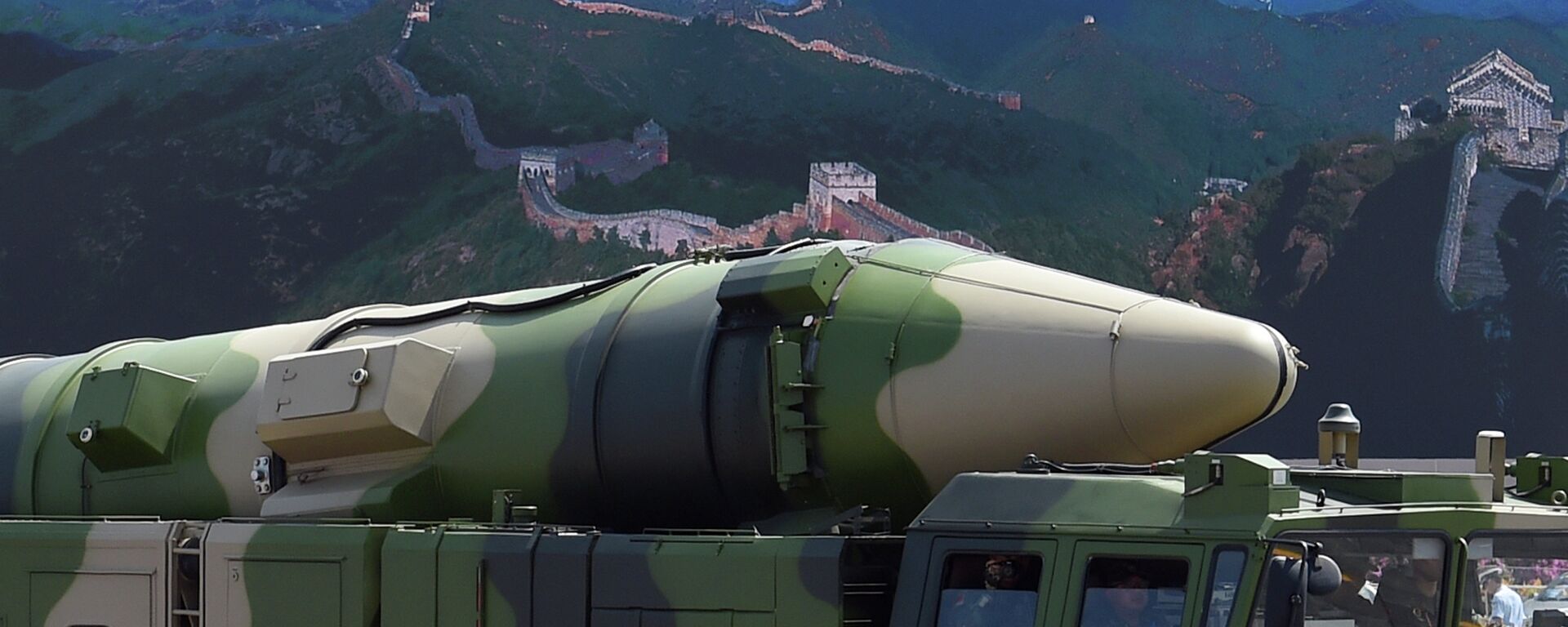Pentagon Second-in-Command Reveals What US Knows About China’s Hypersonic Glide Vehicle Testing

© Photo : voentv.mil.by
Subscribe
Last month, the Financial Times reported that China carried out two hypersonic weapons tests of a new “fractional orbital bombardment” system this past summer involving a hypersonic glide vehicle which America “does not currently possess.” Beijing maintains the testing involved a “routine” trial of reusable space rocket technology.
Pentagon second-in-command Gen. John Hyten, vice chairman of the Joint Chiefs of Staff, has offered new details on what the US knows about one of China’s recent alleged hypersonic glide vehicle tests.
“They launched a long-range missile. It went around the world, dropped off a hypersonic glide vehicle that glided all the way back to China, that impacted the target in China,” Hyten told CBS News on Wednesday, referring to a test said to have taken place on 27 July.
Asked to clarify whether the HGV hit its target, Hyten said “Close enough.”
“That’s a very significant capability that has the potential to change a lot of things, so we have to be very concerned about that,” the general suggested.
“Why are they building all of this capability? They look like a first-use weapon. That’s what those weapons look like to me,” Hyten said.
Asked whether China’s hypersonic glide vehicle testing warranted a comparison to Sputnik-1 – the artificial satellite launched by the USSR in 1957, which ended up shattering the myth of US global technological supremacy, Hyten suggested that the comparison was relevant, even if it has not been treated as such by US officials and media.
“From a technology perspective, it’s pretty impressive…But Sputnik created a sense of urgency in the United States…The [Chinese] test on July 27 did not create that sense of urgency. I think it probably should create a sense of urgency,” the officer said.
President Joe Biden confirmed to journalists in September that he was “concerned” about China’s hypersonic capabilities, without elaborating. Republicans led by South Carolina Senator Lindsey Graham urged Washington to respond to the testing by increasing US military spending. The United States is already the world’s top military spender by far, committing $705.4 billion to defence in 2021. China spent 1.25 trillion yuan, equivalent to about $209 billion, in the same period. The US is also in the middle of a 30-year, $1.7 trillion spending spree aimed at modernizing its strategic nuclear forces. China is keeping the details on its nuclear modernization programme under wraps.
China’s Nuclear Posture
It remains unclear what about China’s alleged summer 2021 hypersonic glider testing is giving rise to concerns among US officials now, given that the People’s Republic has been known to have HGV capability since October 2019 – when the DF-ZF hypersonic glide vehicle was introduced into service with the People’s Liberation Army Rocket Force. The system was tested seven times between January 2014 and November 2017 before being commissioned.

Military vehicles carrying DF-17 missiles participate in a military parade at Tiananmen Square in Beijing on October 1, 2019, to mark the 70th anniversary of the founding of the People’s Republic of China
© AFP 2023 / GREG BAKER
The United States has at least seven hypersonic weapons systems of its own in development, but only the Army-Navy ‘Common Hypersonic Glide Body’ is anywhere close to becoming operational. The US Army proudly took delivery of components of the CHGB system in October, but the missiles themselves were not delivered, and are only expected to be fielded somewhere around fiscal year 2023.
China is estimated to have between 350 and 400 nukes in its arsenal, and its nuclear doctrine prohibits the use of these weapons unless the Asian nation is first attacked using nuclear weapons itself. The PRC is the only nuclear weapons-armed state in the world with ‘no first use’ restrictions in place, and says its arsenal is meant to provide a “minimum deterrent posture,” –that is, enough weapons to respond to aggression, but not to launch first strike surprise attacks itself.
Earlier this month, a Pentagon report suggested that China was working to grow its nuclear arsenal to over 1,000 warheads by 2030, and to expand its “nascent nuclear triad.” China dismissed the report, suggesting it was “full of prejudice,” and that Washington was trying to “hype up talk of the China nuclear threat” while the US itself was the “world’s largest source of nuclear threat.”

Mark Milley Calls China’s Alleged Nuclear Buildup ‘One of Largest Shifts in Geostrategic Power Ever’
16 November 2021, 15:58 GMT



